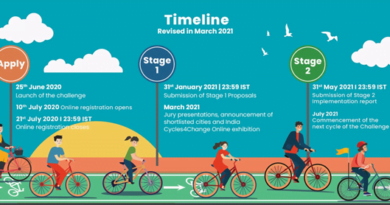Rashtriya Uchchatar Shiksha Abhiyan (RUSA)
Context:
The Government has approved the scheme of Rashtriya Uchchatar Shiksha Abhiyan (RUSA) for continuation till 31st March.2026 or till further review, whichever is earlier.
Contents
Rashtriya Uchchatar Shiksha Abhiyan:
- Rashtriya Uchchattar Shiksha Abhiyan (RUSA) (Hindi for “National Higher Education Mission”) is a holistic scheme of development for higher education in India
- It was initiated in 2013 by the Ministry of Human Resource Development, Government of India.
- It is centrally sponsored scheme (in the ratio of 60:40 for general category States, 90:10 for special category states and 100% for union territories) i
- It aims at providing strategic funding to higher educational institutions throughout the country.
- Funding is provided by the central ministry through the state governments and union territories (UT), which in coordination with the central Project Appraisal Board will monitor the academic, administrative and financial advancements taken under the scheme.
- A total of 316 state public universities and 13,024 colleges will be covered under it.
Objectives
The key objectives of RUSA are to improve access, equity and quality in higher education through planned development of higher education at the state level. Objectives include creating new academic institutions, expanding and upgrading the existing ones, developing institutions that are self-reliant in terms of quality education, professionally managed, and characterized by greater inclination towards research and provide students with education that is relevant to them as well the nation as a whole.
The salient objectives of RUSA are:
- Improve the overall quality of state institutions by ensuring conformity to prescribed norms and standards and adopt accreditation as a mandatory quality assurance framework
- Usher transformative reforms in the state higher education system by creating a facilitative institutional structure for planning and monitoring at the state level, promoting autonomy in State Universities and improving governance in institutions
- Ensure reforms in the affiliation, academic and examination systems
- Ensure adequate availability of quality faculty in all higher educational institutions and promote capacity building at all levels of employment
- Create an enabling atmosphere in the higher educational institutions to promote research and innovation
- Expand institutional base by creating additional capacity in existing institutions and establish new institutions, to achieve higher enrollment
- Correct the regional imbalances in terms of access to higher education by setting up institutions in un-served and underserved areas of the country
- Improve equity in higher education by providing adequate opportunities of higher education to SC/STs and socially and educationally backward classes; promote inclusion of women, minorities, and differently abled persons
Components
The overarching commitment of the RUSA is the consolidation of the universities and their component colleges.
RUSA aims to create new universities through upgradation of existing autonomous colleges and by conversion of colleges to a cluster. It will create new model degree colleges, new professional colleges and provide infrastructural support to universities and colleges. Faculty recruitment support, faculty improvements programmes and leadership development of educational administrators is also an important part of the scheme. In order to enhance skill development the existing central scheme of Polytechnics has been subsumed within RUSA.
A separate component to synergise vocational education with higher education has also been included in RUSA. Besides these, RUSA also supports reforming, restructuring and building capacity of institutions in participating states.
The following are the primary components of RUSA that capture the key action and funding areas that must be pursued for the fulfilment of the targets:
| Creation of Universities by conversion of colleges in a cluster Creation of Universities by upgradation of existing Autonomous College Enhancing Quality and Excellence in selected Autonomous Colleges Equity Initiatives Faculty Improvement Faculty Recruitment Support Infrastructure grants to colleges Infrastructure grants to Universities | Institutional Restructuring, Capacity building and Reforms New Colleges (Professional) New Model Degree Colleges Quality and Excellence in select State Universities (new) Research, Innovation & Quality Improvement Upgradation of Existing Degree Colleges to Model Degree Colleges Vocationalisation of Higher Education (State as a Unit) |
New Phase
- New phase of RUSA targets to reach out the unserved, underserved areas, remote/ rural areas, difficult geographies, LWE (Left-Wing Extremism) areas, NER (North Eastern Region), Aspirational Districts, tier-2 cities, areas with low GER (Gross enrolment ratio) etc., and to benefit the most disadvantaged areas and SEDGs (Socio-Economically Disadvantaged Groups).
- The new phase of the scheme has been designed to implement some of the recommendations and aims of the New Education Policy, which suggests some key changes to the current higher education system to revamp and re-energize it and thereby deliver quality higher education, with equity and inclusion.
- State Governments will be supported for Gender inclusion, Equity Initiatives, ICT, Enhancing employability through vocationalisation & skill upgradation.
- States will also be supported for creation of new Model Degree Colleges.
- State Universities will be supported for Multi-Disciplinary Education and Research.
- Grants will be provided for strengthening both accredited and non-accredited Universities and Colleges for undertaking various activities including teaching-learning in Indian languages.
Source: PIB
You can find many articles on EDUCATION (part of GS II) in our website. Go through these articles share with your friends and post your views in comment section.
Discover more from Simplified UPSC
Subscribe to get the latest posts sent to your email.


